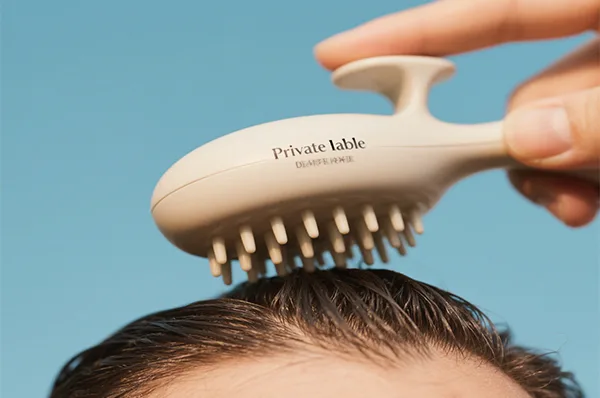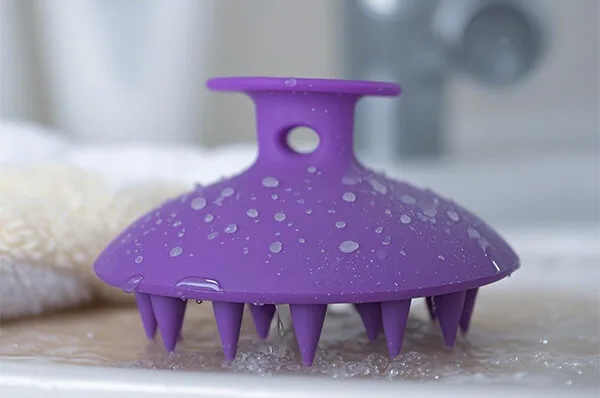- Have any questions?
- +86 19574832024
- admin@beaut-lohas.com
In the ever-evolving world of skincare, countless products claim to be the miracle solution for combating wrinkles. One such product that has gained significant attention in recent years is the silicone wrinkles patch. But the question remains: do these patches really work for wrinkles? To answer this, we need to explore various aspects, from their working mechanism to real-world effectiveness and user experiences.
Understanding the Working Mechanism of Silicone Wrinkles Patches
Silicone wrinkles patches are typically made of medical-grade silicone. They work on the principle of occlusion and hydration. When applied to the skin, the patch creates a microclimate over the area where it is placed. This sealed environment helps to lock in the skin’s natural moisture, preventing transepidermal water loss. As the skin remains hydrated, it becomes plumper and smoother. Moreover, the gentle pressure exerted by the patch on the skin can also encourage collagen production over time. Collagen is a vital protein that provides structural support to our skin, and increased collagen synthesis can potentially help in filling in the wrinkles and making them less visible.
The Claimed Benefits
Proponents of silicone wrinkles patches assert several benefits. Firstly, they are often said to provide immediate results in terms of reducing the appearance of wrinkles. Once the patch is removed, the skin in the treated area usually looks smoother and more refreshed due to the hydration effect. For example, if you apply a patch around the crow’s feet area before an important event, you might notice that the fine lines seem less pronounced when you take it off.
Secondly, with regular and long-term use, there is the hope that the patches can have a more lasting impact on wrinkle reduction. By continuously stimulating collagen production and maintaining optimal skin hydration, they could potentially slow down the progression of wrinkles and even improve the overall texture of the skin in the long run. Additionally, silicone patches are generally considered to be a non-invasive option compared to more drastic anti-wrinkle treatments like Botox injections or invasive cosmetic surgeries, making them an appealing choice for those who prefer a more natural and gentle approach.
Real-World Effectiveness and Scientific Evidence
However, while the claims sound promising, the actual effectiveness of silicone wrinkles patches in truly reducing wrinkles is still a topic of debate. Some small-scale studies have shown that silicone occlusion can indeed improve skin hydration levels and lead to a temporary improvement in the appearance of wrinkles. For instance, in a study where participants used silicone patches on their facial wrinkles for a certain period, there was a measurable increase in skin moisture content and a visual reduction in wrinkle depth immediately after patch removal.
Nevertheless, when it comes to long-term and significant wrinkle reduction, the evidence is less conclusive. There is a lack of large, comprehensive clinical trials that prove beyond doubt that these patches can reverse or even halt the aging process in terms of wrinkle formation. The improvement in the appearance of wrinkles might be mainly due to the short-term hydration effect rather than a fundamental change in the underlying structure of the skin caused by increased collagen production.
User Experiences and Considerations
User experiences with silicone wrinkles patches vary widely. Some users swear by them and report visible improvements in their wrinkles after consistent use. They appreciate the ease of use and the fact that they can be incorporated into their daily skincare routine without much hassle. For example, many people apply the patches at night before going to bed and wake up with smoother-looking skin around their eyes or on their forehead.
On the other hand, some users find that the effects are minimal and short-lived. They might notice a difference right after taking off the patch but then see the wrinkles return to their previous state soon after. Additionally, factors such as the quality of the silicone used, the proper application technique, and individual differences in skin type and condition can all influence how well the patches work for a particular person. For instance, those with extremely dry skin might benefit more from the hydration aspect of the patches, while others with deeper-set wrinkles due to significant sun damage might not see as dramatic of an effect.
Conclusion
In conclusion, silicone wrinkles patches do have some merit in terms of providing short-term hydration and a temporary reduction in the appearance of wrinkles. They can be a useful addition to a skincare routine for those looking for a non-invasive and relatively inexpensive way to care for their skin. However, the claim that they can work wonders in completely eliminating or significantly reducing wrinkles in the long term is yet to be fully supported by robust scientific evidence. As with any skincare product, it’s important for consumers to manage their expectations and understand that while they may offer some benefits, they might not be the ultimate solution for combating the inevitable signs of aging. More research is needed to truly determine the full extent of their effectiveness in wrinkle reduction, but for now, they remain an interesting option in the vast landscape of anti-wrinkle treatments.




